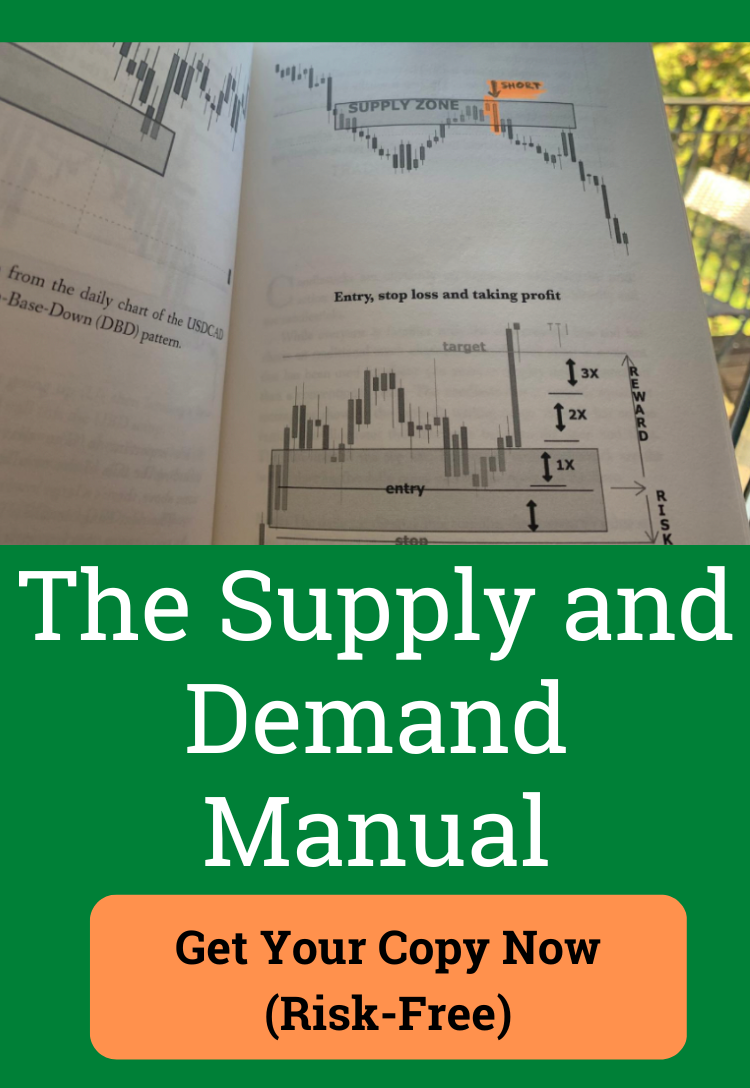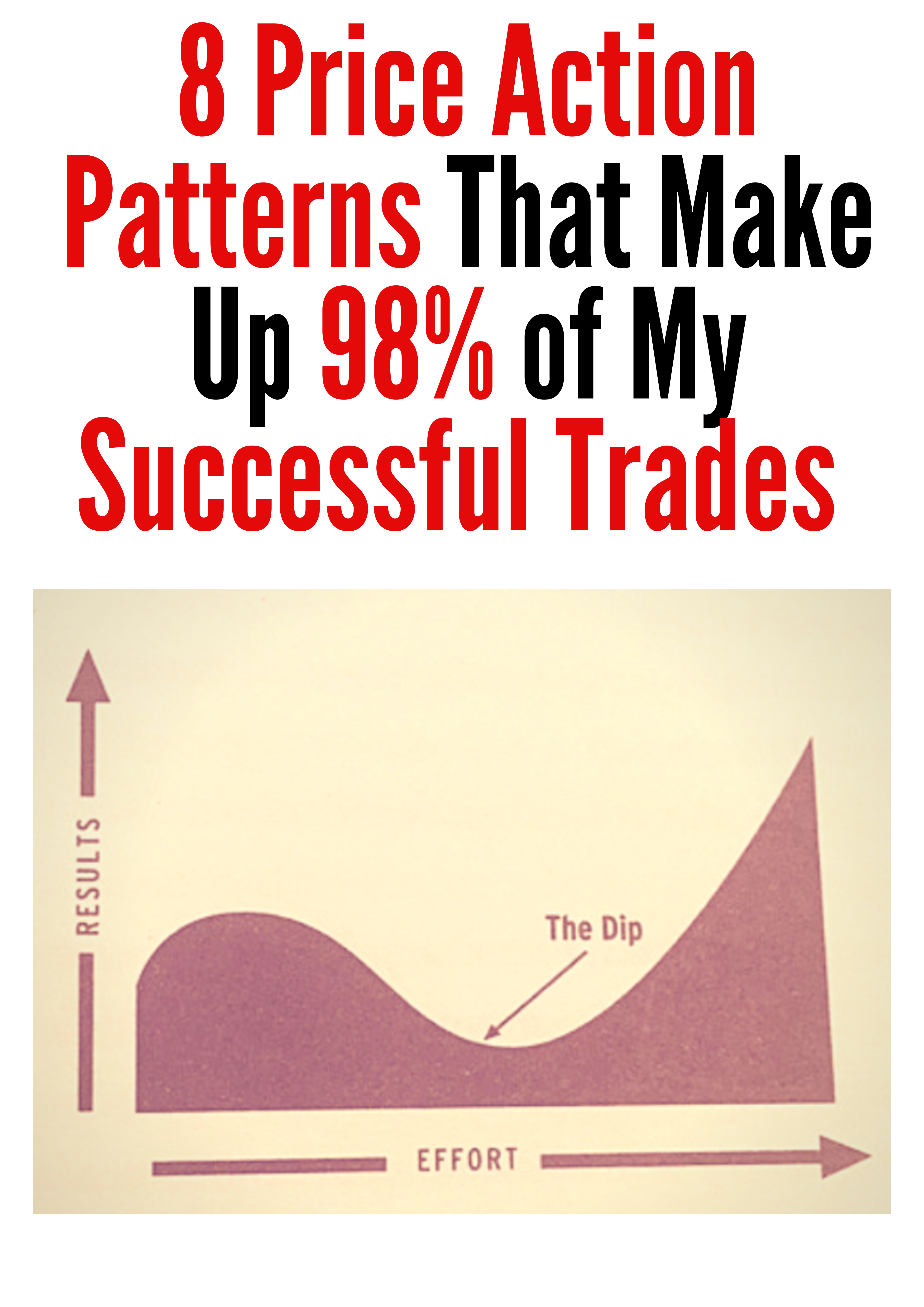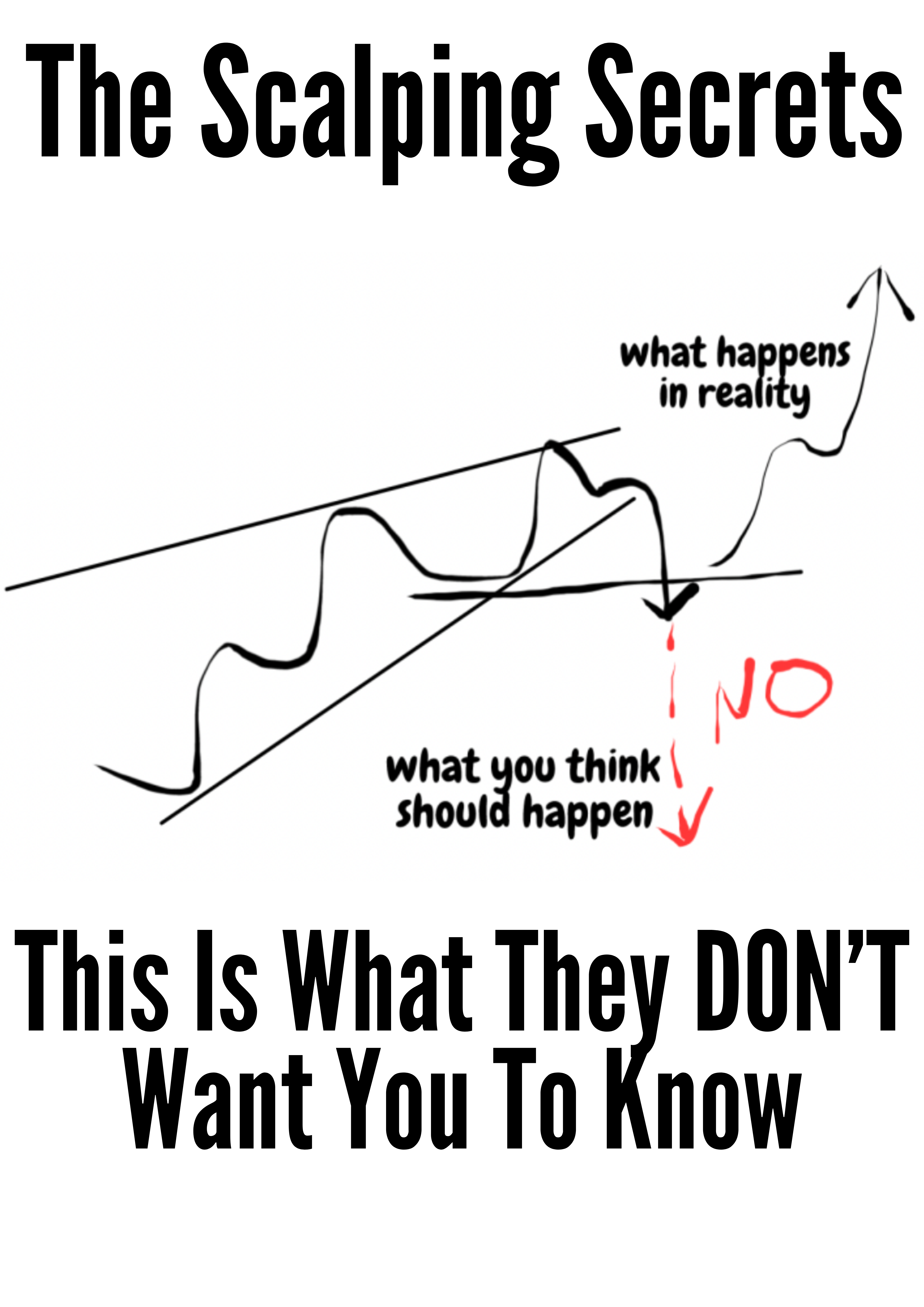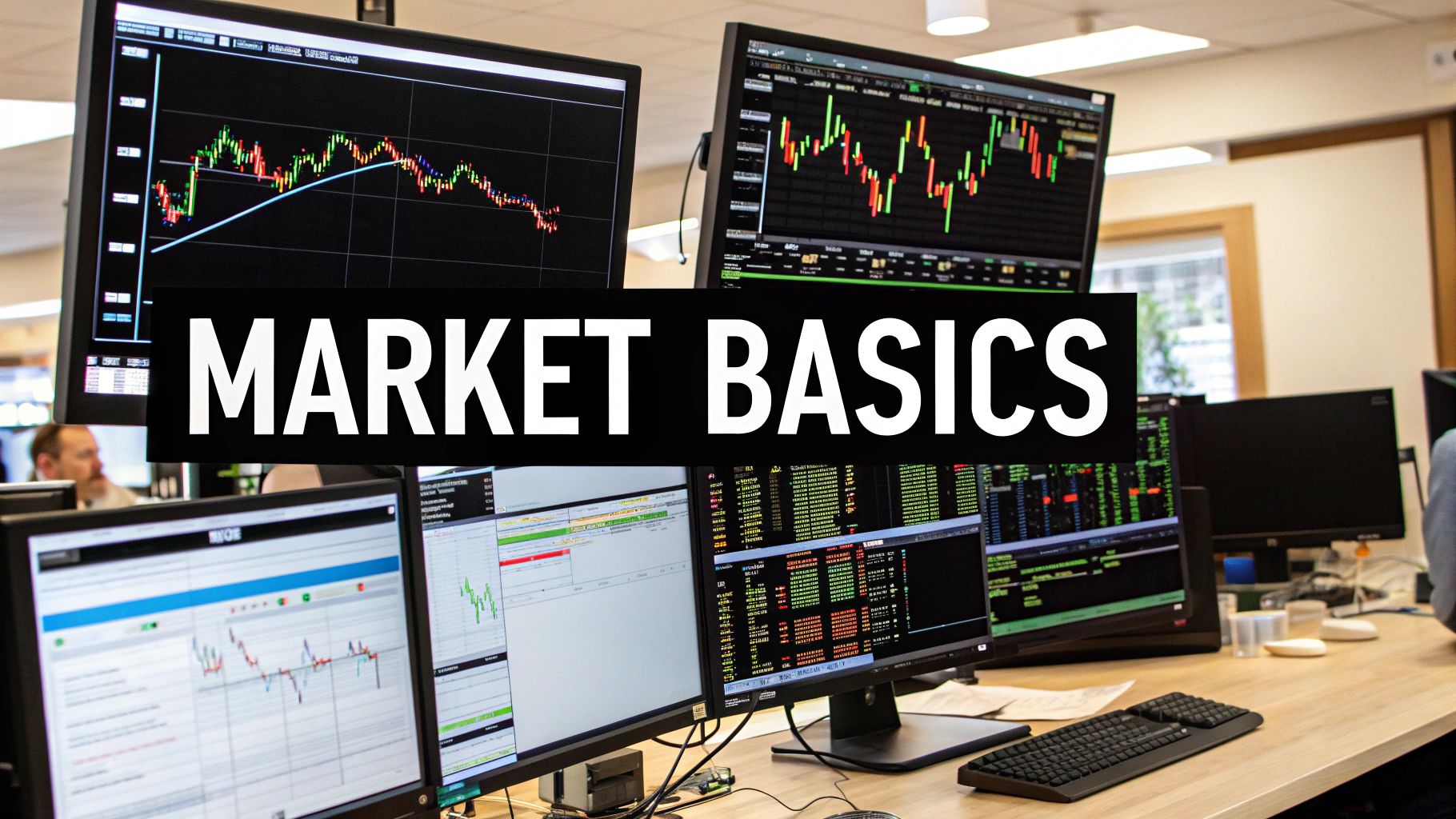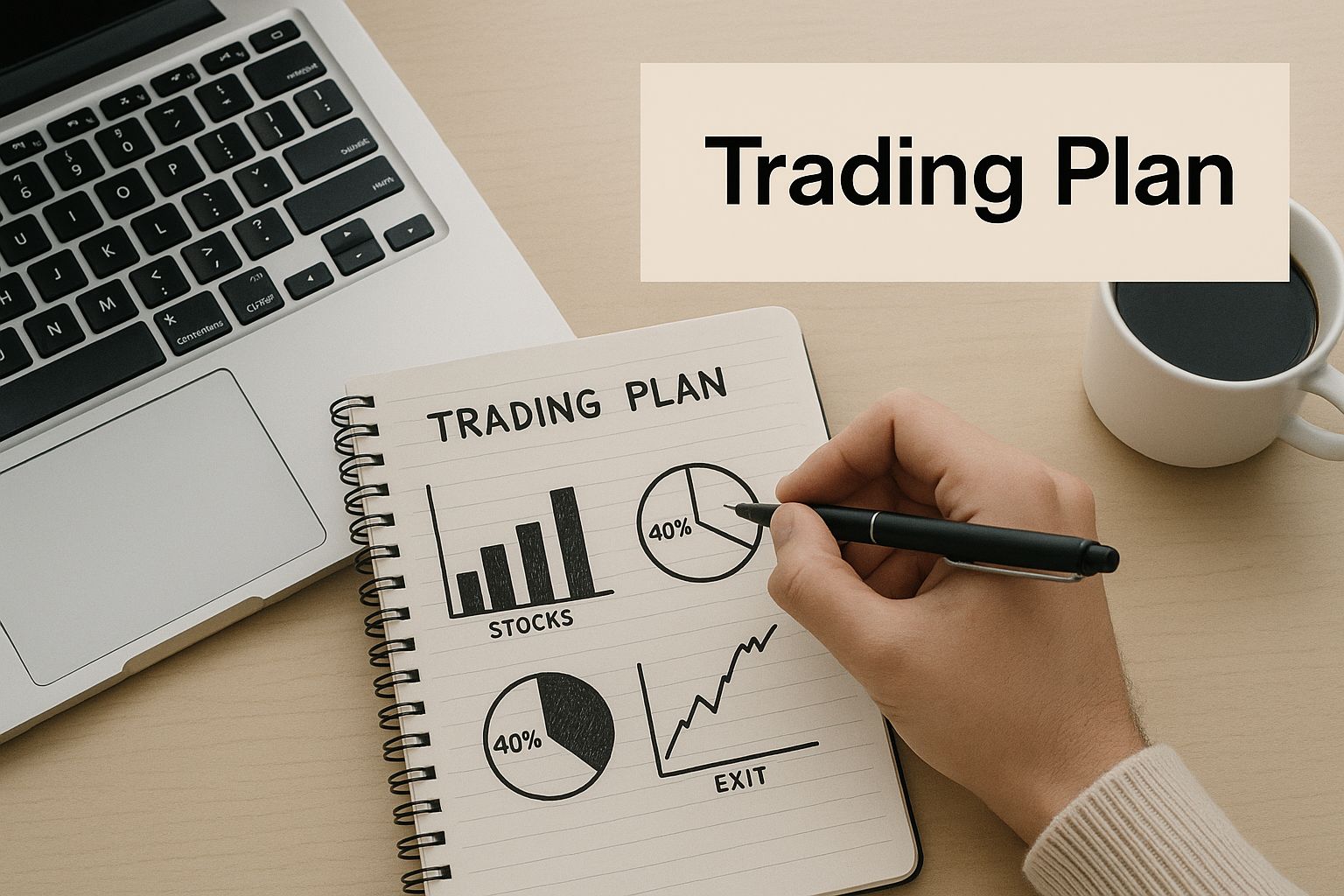How to Become a Profitable Trader: Top Strategies to Succeed
The Reality of Trading Success: What Most Don't Tell You
The world of trading often seems glamorous, filled with promises of fast wealth and ultimate freedom. But the reality of consistent profits is far more complex. This isn't meant to discourage you, but rather to provide a realistic view of what it takes to succeed.
The Sobering Statistics
The first hurdle for aspiring traders is understanding the true success rate. It's significantly lower than many believe. Only a small fraction of day traders consistently make profits. Studies show that this number falls between 3% and 5%. This low rate underscores the significant challenges involved. Want to dive deeper into the numbers? Check out these Day Trading Statistics.
Trading is not gambling; it's a demanding profession requiring dedication and resilience. These statistics shouldn't deter you, but should highlight the need for a structured, informed approach.
Why Most Traders Fail
What separates the successful few from the rest? Several factors contribute to the high failure rate in trading. Many beginners enter with unrealistic expectations, seeing trading as a quick path to riches instead of a business requiring significant effort. This often leads to poor risk management and emotionally driven decisions.
Another major pitfall is the lack of a robust trading strategy. Successful traders don't rely on intuition. They build a well-defined plan, rigorously backtest it, and adapt it as market conditions change.
The Mindset of Success
Profitable trading requires more than just technical skills. It requires a specific mindset. Developing this trader's mindset is crucial. It includes discipline, emotional control, and a long-term perspective. Resources like this guide on how to build mental toughness can provide valuable strategies.
Successful traders see losses as learning opportunities, not setbacks. They avoid chasing quick wins, understanding that consistency and patience are key to long-term success. They also embrace continuous learning and adaptation. Markets constantly evolve, and profitable traders stay ahead of the curve, refining their strategies and expanding their knowledge. This commitment to growth is a defining characteristic of successful traders.
Crafting Your Trading Strategy Blueprint
This infographic portrays a trader carefully developing their strategy. It highlights how important a well-defined plan is for successful trading. The image emphasizes that profitable trading comes from thoughtful planning, not impulsive actions. A structured trading plan acts like a roadmap for navigating the market’s complexities.
Developing a personalized trading strategy is essential for becoming a profitable trader. This blueprint serves as your compass, guiding your decisions and helping you navigate the often volatile financial markets. It's about aligning your trading approach with your personal goals, available time, and risk tolerance.
Defining Your Trading Style
Every trader is unique, and so is their ideal trading style. Choosing a style that complements your personality and resources is crucial. For instance, day trading requires constant market monitoring, whereas swing trading allows for less frequent checks.
- Scalping: This style focuses on incredibly short-term trades, taking advantage of minor price movements.
- Day Trading: All positions are opened and closed within the same trading day.
- Swing Trading: Positions are held for several days or weeks to profit from short-term price swings.
- Position Trading: This style focuses on long-term market trends, holding positions for months or even years.
To further understand these varying approaches, consider the following table:
Let's examine a comparison of these distinct trading styles:
Comparison of Trading Styles
| Trading Style | Time Commitment | Capital Requirements | Risk Level | Profit Potential | Typical Holding Period |
|---|---|---|---|---|---|
| Scalping | Very High | Low to Medium | High | Low to Medium | Seconds to Minutes |
| Day Trading | High | Medium | High | Medium | Minutes to Hours |
| Swing Trading | Medium | Medium | Medium | Medium | Days to Weeks |
| Position Trading | Low | Medium to High | Low to Medium | High | Months to Years |
This table illustrates the trade-offs between the different approaches. While scalping may require less capital, the time commitment and risk are high. Conversely, position trading has a lower time commitment and potentially higher profits, but it requires more patience and capital.
Establishing Clear Entry and Exit Criteria
A cornerstone of any successful trading strategy is defining specific entry and exit points. This eliminates emotional guesswork and establishes objective rules for every trade. These criteria should be based on technical analysis, fundamental analysis, or a blend of both, tailored to your specific trading style. Clear rules help prevent impulsive decisions driven by fear or greed, protecting your profitability.
The Power of Backtesting
Before using real capital, backtesting your strategy is crucial. This involves simulating your trading rules on historical market data. Backtesting helps uncover potential weaknesses in your strategy and offers insights into its potential profitability and risk profile. Think of it as a practice run. It lets you refine your approach and build confidence. Tools like TradingView are often used for backtesting and charting.
Continuous Refinement and Performance Tracking
Even the best traders constantly adapt their strategies. Markets are dynamic, so ongoing refinement is key. Regularly review your trading performance, analyze both wins and losses, and adjust your strategy as necessary. This continuous improvement process is essential for long-term success. Consistent performance tracking reveals what's working and what needs adjustment, ensuring your strategy remains effective in fluctuating market conditions. By actively engaging in this process, you improve your chances of becoming a consistently profitable trader.
Risk Management: The Make-or-Break Trading Skill
Becoming a consistently profitable trader involves more than just picking winning trades. It requires safeguarding your capital against inevitable market fluctuations. In fact, risk management is the key differentiator between consistently successful traders and everyone else. It involves knowing your limits, setting appropriate safeguards, and understanding the potential rewards relative to the risks you take.
Position Sizing: Protecting Your Capital
Position sizing is a fundamental aspect of risk management. It refers to how much capital you allocate to a single trade. Successful traders rarely risk more than a small percentage (1-2%) of their total trading capital on any given trade.
This disciplined approach ensures that a series of losses won't cripple your account. For instance, with a $10,000 account and a 1% rule, your maximum risk per trade would be $100. This measured approach helps you navigate market volatility and stay in the game for the long run.
Stop-Loss Orders: Your Safety Net
Stop-loss orders are another crucial component. These are pre-determined orders that automatically exit a trade when the price drops to a specified level. Seasoned traders base their stop-loss orders on technical analysis and current market conditions, not emotions.
Stop-losses act as a safety net, limiting potential losses and curbing impulsive decisions during volatile periods. They’re essential for protecting capital from unexpected market swings.
Risk-to-Reward Ratio: Focusing on the Bigger Picture
Winning every trade isn't realistic. Profitable traders concentrate on the risk-to-reward ratio. This compares the potential profit of a trade against the potential loss. A 2:1 ratio means that for every $1 risked, the potential profit is $2.
Even with a win rate below 50%, a favorable risk-to-reward ratio can lead to overall profitability. How to master risk management offers further insights. This approach emphasizes maximizing gains on winning trades while minimizing losses on losing ones.
Managing Leverage: Avoiding the Blow-Up
Leverage can amplify profits, but it also magnifies losses. Successful traders understand the importance of responsible leverage management. Over-leveraging can lead to devastating losses, particularly during periods of market volatility.
A disciplined approach to leverage prevents a single adverse market event from wiping out your trading capital. This cautious approach is critical for preserving capital and achieving long-term trading success.
Diversification: Building Resilience
Diversification involves spreading investments across different asset classes or markets. While not directly tied to individual trade risk, diversification reduces the overall portfolio risk. It cushions against substantial losses if a specific market segment suffers a downturn.
This portfolio resilience helps navigate varied market conditions and promotes long-term profitability. By strategically allocating capital across diverse assets, traders can withstand individual market fluctuations and maintain a stable overall portfolio.
Reading Global Market Trends for Prime Opportunities
Profitable traders don't just analyze individual stocks or charts. They also cultivate a deep understanding of the economic forces that shape market movements. This involves interpreting macroeconomic indicators, understanding central bank policies, and recognizing how global trade patterns can influence market behavior to identify high-probability trading setups. This broad perspective empowers traders to anticipate market shifts and capitalize on emerging opportunities.
Integrating Economic Calendars Into Your Trading Decisions
One practical way to incorporate global market trends into your trading strategy is by using economic calendars. These calendars provide schedules of important economic data releases, such as interest rate decisions, inflation reports, and employment figures. Understanding the potential impact of these announcements on various markets allows you to anticipate volatility and position yourself accordingly. For instance, an unexpected interest rate hike can strengthen a currency, presenting profitable opportunities for forex traders.
Spotting Divergences Between Market Sectors
Identifying divergences between different market sectors is another valuable skill. This involves analyzing the performance of various sectors, like technology, energy, or healthcare, relative to the broader market. If the overall market is trending upwards, but the energy sector is lagging, this might indicate a potential opportunity to buy undervalued energy stocks. These divergences offer valuable clues about shifting investor sentiment and emerging trends. Traders who spot these discrepancies can potentially profit by anticipating future market movements.
Understanding global trade patterns is also incredibly insightful. International trade can significantly influence market volatility and trading opportunities. In the first quarter of 2025, G20 merchandise trade experienced a significant increase, with exports rising by 2.0% and imports by 3.1% compared to the previous period. Find more detailed statistics here. This trade growth can generate increased market activity and potential trading opportunities across various sectors. Let's explore some key economic indicators that traders should monitor.
To help illustrate the impact of key economic indicators on different markets, the following table provides a helpful overview.
Key Economic Indicators for Traders
This table outlines important economic indicators, their release frequency, and how they typically impact different markets.
| Economic Indicator | Release Frequency | Impact on Forex | Impact on Equities | Impact on Commodities |
|---|---|---|---|---|
| Interest Rate Decisions | Varies by central bank (typically monthly or quarterly) | Significant impact on currency valuations | Can influence borrowing costs and corporate profits | Can affect demand for raw materials |
| Inflation Reports (e.g., CPI) | Typically monthly | Can influence central bank policy and currency valuations | Can impact consumer spending and corporate pricing power | Can drive commodity prices |
| Employment Figures (e.g., Non-Farm Payrolls) | Typically monthly | Can impact currency valuations and central bank policy | Can reflect economic health and consumer confidence | Can influence demand for certain commodities |
| GDP Growth Rate | Typically quarterly | Can influence currency valuations and investor sentiment | Can reflect overall economic health and corporate performance | Can impact demand for raw materials |
| Consumer Confidence Index | Typically monthly | Can impact currency valuations and consumer spending | Can reflect consumer sentiment and spending patterns | Can influence demand for consumer goods |
By understanding these key indicators, traders can gain valuable insights into the potential direction of market movements.
Balancing Technical and Fundamental Analysis
Many professional traders combine technical analysis with fundamental analysis to develop a comprehensive market view. While technical analysis focuses on chart patterns and price action, fundamental analysis examines the underlying economic factors driving market trends. Integrating these two approaches allows traders to confirm technical signals with fundamental data, increasing the likelihood of successful trades. Effective risk management is also crucial for long-term success; learn more about risk management frameworks.
Frameworks for Tracking Global Trends
Finally, developing practical frameworks for tracking global trends is essential to avoid information overload. This might involve concentrating on a few key economic indicators, following reputable financial news sources, or subscribing to specialized research services. Filtering the vast amount of available information allows you to efficiently monitor relevant trends and make well-informed trading decisions. This targeted approach helps traders stay up-to-date on important market developments without being overwhelmed by data, fostering a more effective path to profitable trading.
Technical Analysis That Actually Delivers Results
Beyond simple chart patterns, a deeper understanding of technical analysis can significantly improve your trading profitability. It's not about using every indicator available, but focusing on how price action and market structure reveal high-probability entry and exit points. For further exploration of chart patterns, check out this resource: How to master chart patterns.
Multiple Timeframe Analysis: Filtering Out the Noise
Many successful traders use multiple timeframe analysis to get a comprehensive view of market trends. They analyze different chart timeframes, like daily, hourly, and 15-minute charts, to validate potential trading signals. For example, a bullish daily chart signal aligned with a similar hourly chart pattern increases the likelihood of a successful trade. This method helps filter out short-term price fluctuations, allowing traders to focus on significant market movements.
Identifying Genuine Support and Resistance
Support and resistance zones represent price levels where historical market reversals have occurred. However, simply drawing horizontal lines isn't sufficient. Experienced traders look for confluence, or multiple factors reinforcing these zones. These factors might include prior price reactions, trendlines, or Fibonacci levels. Confluence zones act as psychological barriers, impacting trader behavior and increasing the probability of price reversals. Identifying these zones is essential for spotting high-probability trading setups.
Confirming Trade Signals: Reducing False Entries
Even well-structured setups can fail, highlighting the importance of confirming trade signals to minimize false entries. This can involve analyzing specific candlestick patterns, momentum indicators, or volume confirmation. For instance, increased buying volume can validate a breakout from a resistance zone, strengthening the signal. Just as a compressed spring releases with greater force, increased volume reinforces price movements and boosts confidence in the trade setup.
Developing Your Edge: Combining Technical Tools
Successful traders rarely rely on a single indicator. They combine various technical tools to develop their unique edge. This might involve using price action alongside momentum indicators like the Relative Strength Index (RSI), or employing volume spread analysis to identify significant accumulation or distribution phases. Combining different technical approaches strengthens a trading strategy, much like diverse, strong tools build a sturdy house.
Exit Strategies: Protecting Your Profits
Well-defined exit strategies are as crucial as entry identification. Profitable traders establish profit targets and stop-loss levels before entering a trade. This disciplined approach safeguards profits and minimizes potential losses, preventing emotional decision-making during a trade. Like a captain charting a ship's course, a trader must map their trade's journey, from entry to exit.
Systematic Approaches: Consistency Across Markets
Finally, consistent traders develop systematic approaches applicable across various market conditions. This involves creating a set of rules for entry, exit, and risk management, and consistently applying them regardless of market fluctuations. This disciplined approach promotes consistency and helps traders avoid emotional decisions based on fear or greed. Similar to a pilot adhering to a pre-flight checklist, a systematic trading strategy ensures consistent execution, regardless of external conditions.
Exploiting Regional Market Dynamics for Profit
Savvy traders know that global markets aren't a single entity. Each region offers its own set of opportunities and obstacles. Recognizing these regional market dynamics is essential for profitable trading. This involves understanding how differences in trading hours, economic policies, and market correlations can give you an advantage.
Leveraging Differences in Trading Hours
Global markets operate across various time zones. This allows traders to capitalize on overlapping trading sessions. The Asian session overlaps with the European session, for instance, and the European session overlaps with the North American session.
This overlap leads to periods of higher market liquidity and volatility, which can provide trading opportunities. Experienced traders can use these overlaps to strategically enter or exit positions.
Understanding Market Correlations
Markets often display correlations, meaning they tend to move similarly. For example, commodity prices and the currencies of commodity-exporting nations often have a positive correlation. However, these relationships can shift or even reverse. Spotting these changes can uncover valuable trading opportunities.
Understanding these correlations allows traders to identify potential arbitrage opportunities or manage risk in one market by taking offsetting positions in another.
Adapting to Regional Economic Policies
Economic policies differ substantially across regions. Interest rate changes by central banks, like the Federal Reserve in the U.S., can significantly impact currency and stock markets.
Trade agreements and political events within a region can also create volatility and trading opportunities. For instance, a central bank raising interest rates might attract foreign investment, thus strengthening the local currency. This creates potential profit for forex traders who anticipate such policy shifts.
Understanding regional economic data releases and their potential market effect is also vital for informed trading decisions.
Tracking Regional Divergences
Identifying regional divergences is key to taking advantage of market inefficiencies. This means tracking economic data, market sentiment, and technical indicators across different regions. For example, if one region’s economic growth outpaces another, it could present opportunities to invest in assets from the faster-growing area. These divergences can be strong trading signals.
Positioning Ahead of Market Shifts
Successful traders anticipate market changes between regions. Analyzing global macroeconomic trends and forecasting their regional impacts helps traders position themselves for potential profits. This proactive approach can give you a significant advantage.
Diversifying Your Approach Across Geographic Areas
Finally, diversifying your trading strategy across different geographic areas helps manage risk and maximize potential gains. By spreading investments across various regions, traders can reduce the impact of negative events in any single market.
This approach also increases the chance of capturing gains from positive developments in other markets. Geographic diversification builds portfolio resilience and creates a more balanced and potentially more profitable trading strategy. The global market outlook for 2025 presents a mixed bag. Potential slowdowns in global growth could impact trading volumes and profitability. However, anticipated central bank rate cuts might stimulate markets later in the year. This is particularly relevant for traders focused on the U.S. and Europe. While the U.S. is projected to remain a growth engine, Europe faces structural challenges. Explore this topic further: Global Market Outlook.
Mastering the Trader's Mindset: Psychological Resilience
Trading is a psychological game. While strategies and market analysis are crucial, your psychological resilience determines long-term profitability. This means understanding and managing emotions, especially under pressure. This section explores the mental frameworks and practical techniques successful traders use to navigate the emotional rollercoaster of trading. You might be interested in: How to master trading psychology.
The Psychological Rollercoaster of Trading
Trading presents constant emotional challenges. The euphoria of winning can lead to overconfidence and excessive risk-taking. Conversely, losses can trigger fear, self-doubt, and revenge trading, where traders try to recoup losses with impulsive, high-risk trades.
Successful traders learn to recognize and manage these emotional swings. They understand that discipline and emotional control are as important as technical skills. They treat trading like a business, not a gamble, making rational decisions based on strategy, not feelings.
Maintaining Discipline When Emotions Run High
Maintaining discipline during intense emotion is paramount. One effective technique is establishing pre-defined rules for entry and exit points, position sizing, and overall risk tolerance. These rules, established before entering a trade, safeguard against impulsive decisions driven by fear or greed.
For example, a trader might decide to never risk more than 1% of their trading capital on a single trade. This pre-determined limit helps prevent emotional decisions that could lead to significant losses. Adhering to pre-set rules helps traders remove emotion from the equation and stay focused on long-term goals.
Overcoming Fear, Greed, and Revenge Trading
Fear and greed are common emotional pitfalls. Fear can prevent traders from taking calculated risks, leading to missed opportunities. Greed can push traders to hold onto winning positions for too long, risking profits. Revenge trading, driven by the desire to recoup losses quickly, is often disastrous.
Successful traders develop strategies to combat these emotional traps. One approach involves practicing mindfulness and self-awareness. This means regularly checking in with their emotional state and recognizing when emotions are influencing trading decisions. Taking breaks, journaling, and practicing relaxation techniques can help.
Managing Stress During Volatile Markets
Market volatility is inevitable. Successful traders learn to manage the stress associated with unpredictable swings. They understand that short-term fluctuations are normal and don't reflect the long-term value of their investments. They avoid constantly monitoring portfolios during periods of high volatility and focus on the bigger picture.
Having a support system is also crucial. Talking to fellow traders, mentors, or financial advisors can provide perspective and emotional support. This external perspective can help traders stay grounded and make rational decisions during stressful periods.
Actionable Routines for Emotional Equilibrium
Many professional traders develop routines to maintain emotional balance. This might include regular exercise, meditation, or spending time in nature. These activities can reduce stress, improve focus, and promote rational decision-making.
Just as athletes prepare with physical and mental training, successful traders use these routines to maintain a balanced emotional state. This enables them to execute trading plans with discipline and composure, regardless of market conditions.
Ready to transform your trading performance? Visit Colibri Trader and discover the power of price action trading.


